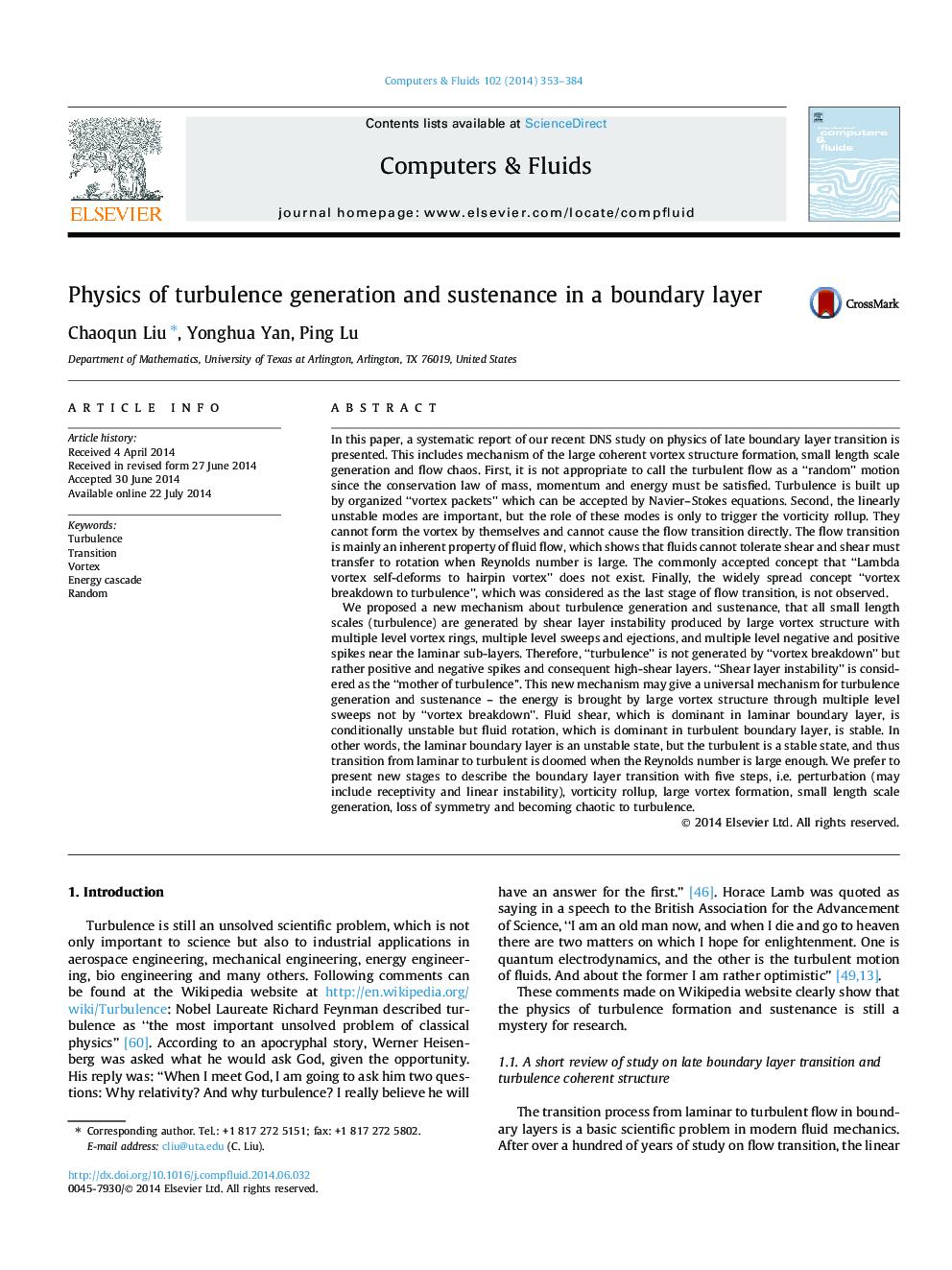| Article ID | Journal | Published Year | Pages | File Type |
|---|---|---|---|---|
| 7157185 | Computers & Fluids | 2014 | 32 Pages |
Abstract
We proposed a new mechanism about turbulence generation and sustenance, that all small length scales (turbulence) are generated by shear layer instability produced by large vortex structure with multiple level vortex rings, multiple level sweeps and ejections, and multiple level negative and positive spikes near the laminar sub-layers. Therefore, “turbulence” is not generated by “vortex breakdown” but rather positive and negative spikes and consequent high-shear layers. “Shear layer instability” is considered as the “mother of turbulence”. This new mechanism may give a universal mechanism for turbulence generation and sustenance - the energy is brought by large vortex structure through multiple level sweeps not by “vortex breakdown”. Fluid shear, which is dominant in laminar boundary layer, is conditionally unstable but fluid rotation, which is dominant in turbulent boundary layer, is stable. In other words, the laminar boundary layer is an unstable state, but the turbulent is a stable state, and thus transition from laminar to turbulent is doomed when the Reynolds number is large enough. We prefer to present new stages to describe the boundary layer transition with five steps, i.e. perturbation (may include receptivity and linear instability), vorticity rollup, large vortex formation, small length scale generation, loss of symmetry and becoming chaotic to turbulence.
Related Topics
Physical Sciences and Engineering
Engineering
Computational Mechanics
Authors
Chaoqun Liu, Yonghua Yan, Ping Lu,
